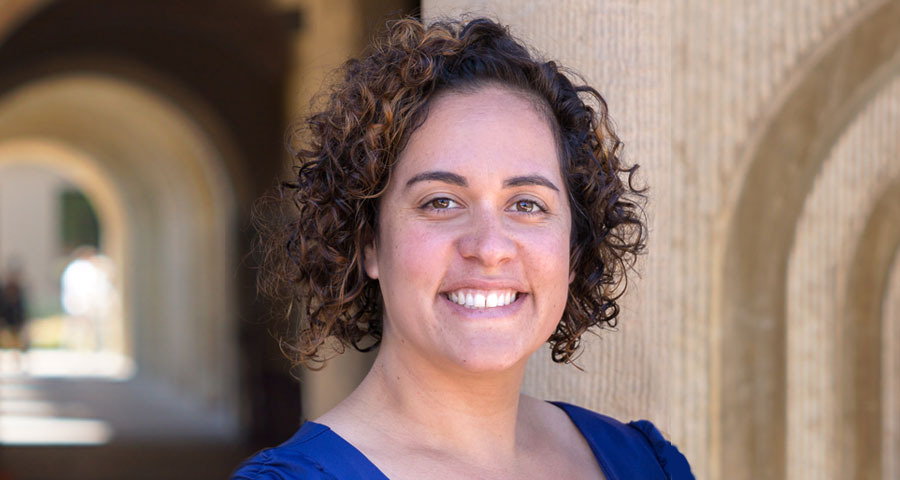
Schools that received state funds to expand career training programs saw lower dropout rates, Stanford researcher finds
For decades, high school students who weren’t considered “college material” were steered onto a vocational track with limited academic requirements, which may have helped them develop job skills but left them unprepared if they wanted to continue their education.
That’s beginning to change as high schools move toward a new model known as career pathways, which combine a technical education with college-prep coursework while linking students with local employers for real-world experience.
A new study by a Stanford education researcher shows that this approach pays off. California school districts that were awarded state funds to form career pathways in high-growth fields saw a 23 percent decline in high school dropout rates, according to research by Sade Bonilla, a doctoral candidate at Stanford Graduate School of Education (GSE).
The decrease was driven largely by female students, which Bonilla said was likely due to the schools’ focus on creating pathways in traditionally female-dominated sectors such as health care support.
“These findings suggest that a pragmatic approach to this type of school reform can make a difference for students who are at risk of dropping out of high school,” said Bonilla, whose research is detailed in a working paper released May 2 by the Stanford Center for Education Policy Analysis (CEPA). “It serves as a proof point for other states.”
Bonilla also presented the findings in March at the annual conference of the Association for Education Finance and Policy and at the National Academy of Education/Spencer Fellows Retreat.
A new model

The “pathway” approach is distinct from many schools’ career and technical education (CTE) offerings in that it provides a progressive sequence of job-related courses in a field, rather than an assortment of stand-alone classes, and connects students with community college programs and local employers in their field of interest.
“There’s more intentionality about students making progress in an area and getting more value when they enter the labor market,” said Bonilla.
What’s more, she said, by delivering college-preparatory academic coursework, the pathway approach integrates college and career readiness. “It doesn’t preclude you from doing one or the other.”
Students in a pathway program on building design, for example, might choose to go on to the local community college and get a certificate in plumbing or an associate's degree in engineering. “Or they could go to a four-year school and major in architecture,” said Bonilla. “The idea is that kids are going to get off this pathway at different points, but they're all going to start in the same place in high school.”
A natural experiment
The competitive grant program Bonilla studied was established by California lawmakers in 2013 to award one-time funding for schools to establish or expand career pathway programs. Recipients were chosen in two rounds and awarded a total of $500 million statewide between 2014 and 2017.
Bonilla took advantage of what she calls a “natural experiment” that occurred through the award process: The selection committee rated applicants using a detailed rubric based on the schools’ plans and capacity to implement a career pathway program. Districts that just made the cutoff and received the grant were nearly indistinguishable from those that fell just below the threshold in terms of their underlying capacity.
Spending data confirmed that grant recipients increased their per-pupil expenditures on CTE programs by more than 20 percent, compared with applicants who didn’t receive the funding. The impact of that spending was significant: Bonilla documented on average a 23 percent decline in dropout rates among grant recipients.
Female students accounted largely for the decline, even though past research has shown that males are more likely to self-select into CTE academies. A key requirement for applicants of the California grant program was to identify high-growth occupations in their region—and many focused on creating career pathways in the expanding health care industry, Bonilla said, where entry-level support roles are traditionally dominated by female workers.
"This type of program seems like a useful policy lever to get school districts to think more about the regional economy—which fields are growing, and which are shrinking. It’s a way for states to help districts, and for districts to help kids, better understand the careers that are potentially available.”
—Sade Bonilla, doctoral candidate at Stanford Graduate School of Education
Impact beyond school engagement
The return on investment for a state that offers start-up funding for this type of program is substantial, said Bonilla, a Spencer/National Association of Education fellow who will join the faculty of the University of Massachusetts at Amherst this fall.
Based on the spending data for the California grant program, she estimated that preventing a single student from dropping out cost the state approximately $18,000. The diploma is worth far more.
“The average high school graduate will realize approximately $300,000 more in lifetime earnings than someone who dropped out,” Bonilla said (the figure is higher for men and lower for women). “A high school graduate will pay more taxes, be more likely to have health insurance, have fewer emergency room visits, fewer interactions with the criminal justice system—you can think about it in a lot of different ways.”
Meanwhile, administering the funds as California did—through a competitive grant program that encourages schools to design their career pathway programs around regional economic trends—can better prepare students for the landscape they’ll face when they enter the workforce, Bonilla said.
“We know that most kids tend to stay close to home to find a job,” she said. “This type of program seems like a useful policy lever to get school districts to think more about the regional economy—which fields are growing, and which are shrinking. It’s a way for states to help districts, and for districts to help kids, better understand the careers that are potentially available.”
This research was supported by the Spencer/NAEd Dissertation Fellowship, the Karr Family Fellowship and the Institute for Education Sciences. Sade Bonilla’s GSE faculty advisor is Thomas S. Dee.



